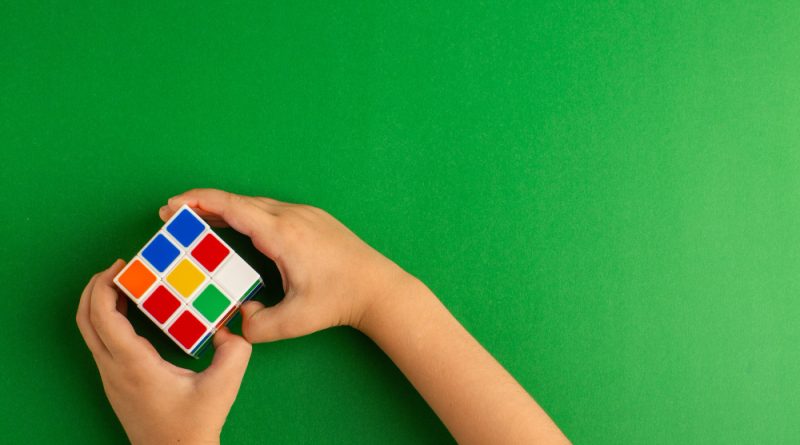Master the Cube: Easy Solutions for Beginners
Solving a Rubik’s Cube is a challenging but highly rewarding experience that captivates puzzle enthusiasts of all ages. Whether you are a complete novice or have had some experience with the cube, this guide will walk you through how to solve cube step-by-step, making it simple and approachable for beginners. By understanding the basics and practicing consistently, you can master the cube and enjoy the satisfaction of solving this iconic puzzle.
Understanding the Rubik’s Cube
Before diving into the solution, it’s essential to understand the basic structure of the Rubik’s Cube. A standard 3×3 Rubik’s Cube consists of six faces, each with nine squares, and each face can rotate independently. There are three types of pieces:
- Center Pieces: These are fixed and indicate the color of each face. There are six center pieces, one on each face.
- Edge Pieces: These have two colors and are located between the corners. There are 12 edge pieces.
- Corner Pieces: These have three colors and are positioned at the corners. There are eight corner pieces.
The goal is to get each face of the cube to display a single, uniform color.
Step 1: Solving the White Cross
The first step in how to solve a cube is solving the white cross. Follow these steps to achieve this:
- Locate the white center piece and hold the cube with this piece on the top.
- Find the white edge pieces (pieces with white and one other color) and position them to form a white cross on the top face. The other color on these edge pieces should match the center color of the adjacent faces.
To position an edge piece correctly, use these moves:
- If the edge piece is on the bottom layer, turn the bottom face to align the piece beneath its matching center color, then rotate the front face 180 degrees to bring the white edge piece to the top.
- If the edge piece is on the middle layer, move it to the bottom layer first, then use the above move to place it correctly.
Step 2: Solving the White Corners
After completing the white cross, the next step is to solve the white corners to complete the first layer. Follow these instructions:
- Find a white corner piece on the bottom layer.
- Position the corner piece directly below the spot where it needs to go on the top layer.
To move the corner piece into place, use this algorithm: R U R’ U’. Repeat this sequence until the white corner piece is correctly positioned.
Step 3: Solving the Middle Layer Edges
With the first layer completed, the next task is to solve the middle layer edges. Here’s how to proceed:
- Find an edge piece on the bottom layer that does not contain yellow.
- Position the edge piece beneath the center piece of the face it matches in color.
Use one of these algorithms to place the edge piece:
- For moving the edge piece to the left: U’ L’ U L U F U’ F’
- For moving the edge piece to the right: U R U’ R’ U’ F’ U F
Step 4: Solving the Yellow Cross
The next step is to solve the yellow cross on the top layer. This can be more challenging, but with the right algorithm, it becomes manageable.
- Identify the yellow pattern on the top layer. There are three possible patterns: a dot (no yellow edges in place), an L-shape (two yellow edges), or a line (four yellow edges in a straight line).
Use the following algorithm to form a yellow cross:
- F R U R’ U’ F’
Repeat this sequence until you achieve a yellow cross on the top layer.
Step 5: Solving the Yellow Corners
After forming the yellow cross, the next step is to position the yellow corners correctly. This step involves two phases: positioning the yellow corners correctly and then orienting them properly.
- Position the yellow corners in their correct spots (they don’t have to be oriented correctly yet). Find a corner piece that is already correctly positioned, then use the algorithm: U R U’ L’ U R’ U’ L.
- Orient the yellow corners by holding the correctly positioned corner in the front-right position and using the algorithm: R U R’ U’ R U R’ U’. Rotate the top face to bring each misoriented corner to the front-right position and repeat the algorithm.
Step 6: Completing the Final Layer Edges
The final step in how to solve a cube is to orient the last layer edges to complete the cube. Here’s how:
- Position the edges correctly by using the algorithm: R U R’ U R U2 R’ U. This will swap the edges around until they are all correctly oriented.
- Finish the cube by rotating the top layer to align the edges with the corresponding center pieces on each face.
Practice and Patience
Solving a Rubik’s Cube requires practice and patience. Each step builds on the previous one, and understanding the algorithms and their applications is key to success. Here are some additional tips to keep in mind:
- Practice the algorithms until you can perform them without looking at the instructions.
- Work on your finger tricks to improve your speed and efficiency.
- Stay patient and persistent. It might take several attempts to solve the cube, but with practice, you’ll become more proficient.
Advanced Tips for Speed and Efficiency
Once you have mastered the basic steps of solving a Rubik’s Cube, you can start focusing on improving your speed and efficiency. Here are some advanced tips:
- Learn Advanced Algorithms: Beyond the beginner methods, there are advanced algorithms known as CFOP (Cross, F2L, OLL, PLL) that can significantly reduce the number of moves required to solve the cube.
- Practice Finger Tricks: Finger tricks are techniques used to turn the cube quickly and efficiently. Practicing these can help you solve the cube faster.
- Use a Timer: Timing your solves can help you track your progress and identify areas where you can improve.
- Join a Community: Joining a Rubik’s Cube community, either online or in person, can provide support, resources, and motivation to improve your skills.
Conclusion
Learning how to solve a cube is a rewarding and intellectually stimulating experience. By following these seven simple steps, you can master the basics of solving the cube and impress your friends and family with your skills. Remember, the key to success is understanding the structure of the cube, practicing the algorithms, and staying patient throughout the process. With dedication and practice, you can become proficient in solving the Rubik’s Cube and enjoy the satisfaction of completing this classic puzzle.




